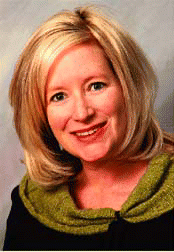At Albany ENT and Allergy Services, a full-body CT scanner has been an important addition to the diagnostic armamentarium since 2001. After careful financial analysis to make sure the expense of installing a scanner was warranted, Dr. Setzen and his colleagues also proactively addressed possible utilization concerns. They met with their major carriers to suggest a two-year period to monitor appropriateness of utilization. At the end of the first year, the practice was no longer required to monitor utilization rates, because they were able to demonstrate that they were continuing to utilize the technology appropriately.
Explore This Issue
February 2008Pathways to Accreditation
At present, UnitedHealthcare recognizes both the American College of Radiology (ACR) and the IAC’s Intersocietal Commission for the Accreditation of Computed Tomography Laboratories (ICACTL) programs for accrediting CT scanners. Since 1963, ACR has provided accreditation for diagnostic imaging and radiation oncology. The IAC, established in 1989, uses an intersocietal approach, drawing from a range of medical specialties in addition to radiology, to develop its program standards for a variety of testing modalities, such as echocardiography, magnetic resonance imaging, and others, in addition to CT. (Each of these commissions has a separate designation and set of accreditation standards for each modality-for example, the Intersocietal Commission for the Accreditation of Echocardiography Laboratories, or ICAEL.)
Both organizations’ programs for accrediting CT are three-year programs, are peer-review processes, and are comparably priced. However, ACR’s approach is to accredit the unit (that is, the CT machine itself), whereas IAC accredits the diagnostic laboratory. Both programs offer several pathways for oversight of the CT scanning process. For example, the supervising physician for the ACR accreditation program can be a board-certified radiologist or diagnostic radiologist, or another physician who has completed continuing medical education units and has interpreted 500 cases within the last 36 months. Accordingly, the ICACTL standards also require the diagnostic laboratory’s medical director to have completed training in CT scanning in organ systems in his or her specialty, continuing medical education in radiation safety, and independent interpretation of at least 50 CT examinations. Both programs also have stringent qualifications for technical staff (radiologic technologists, medical physicists, and the like).
For a summary of the ACR’s CT accreditation program requirements, go to www.acr.org/accreditation/computed/ct_reqs.aspx . To view and download ICACTL’s CT Standards, go to www.icactl.org/icactl/apply/standards.htm .
Accreditation Differences
Although the ACR and the IAC are now technically competing organizations, Ms. Sloper and Pamela A. Wilcox, RN, MBA, Assistant Executive Director for Quality and Safety for the ACR, report that their organizations share a healthy respect for their different approaches to accreditation. The ACR, as stated above, accredits the CT unit itself, and as part of the quality review process, requires phantom images to be furnished for review. In this process, a lucite simulation of human tissue is scanned by the machine, which allows assessment of the technical capabilities of the scanner to assure appropriate calibration. According to Ms. Wilcox, the ACR is currently evaluating data from manufacturers of the compact otolaryngology-specific CT scanners to see whether they can meet ACR criteria. However, if a practice installs a full-body CT scanner, the option to apply for ACR accreditation is open. (Dr. Setzen stated that some two-slice full-body scanners are comparable in price to the compact otolaryngology-specific scanners.)
If the otolaryngologist is using a CT scanner that is the compact, limited-use volume/cone beam type highlighted in part 1 of this series, accreditation for the near term is available only through ICACTL. The latter is a recent development; standards were formalized and published in September 2007 and are supported by 10 sponsoring organizations, including the American Academy of Otolaryngology-Head and Neck Surgery. Dr. Setzen sits on the ICACTL board of directors and serves as its secretary. He also participated in the pilot accreditation program developed by ICACTL. He found the process a valuable one: Who better than an ENT to give input about ENT standards, ENT utilization and the appropriateness of ENT scans? The ICACTL program allows our academy to be part of an institutional effort to ensure that ENTs are well served in the process and that quality patient care is ensured.


Leave a Reply